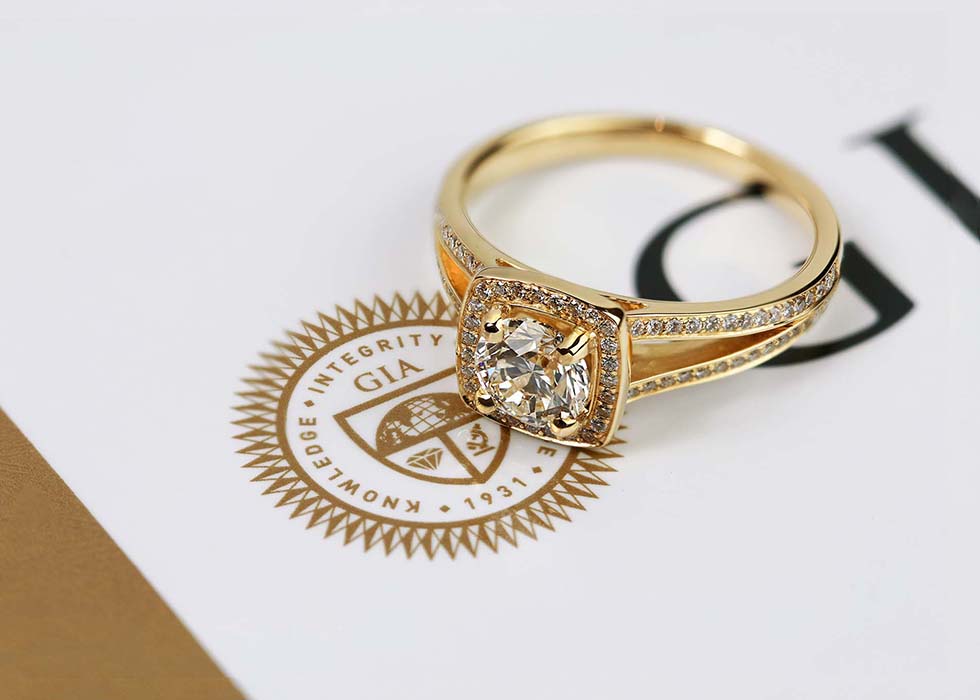
At Finite Jewels, we know that choosing an engagement ring is an exciting but sometimes overwhelming experience. The world of diamond rings is rich with possibilities, and even when selecting a seemingly simple solitaire ring, there are countless variations to consider—from stone shape and setting styles to shank designs and metal choices.
We believe that understanding the fundamentals of engagement ring styles and settings will empower you to make a confident choice. Whether you’re drawn to the classic brilliance of a solitaire, the dazzling allure of a halo, or the intricate detailing of a diamond-set band, our guide will help you navigate the options.
If you have any questions or can’t quite find what you’re looking for, we’re always here to help.
The style and setting of an engagement ring are often used interchangeably, but they refer to different aspects of the ring’s design:
Both elements work harmoniously to create a ring that reflects personal style and enhances the brilliance of the diamond.
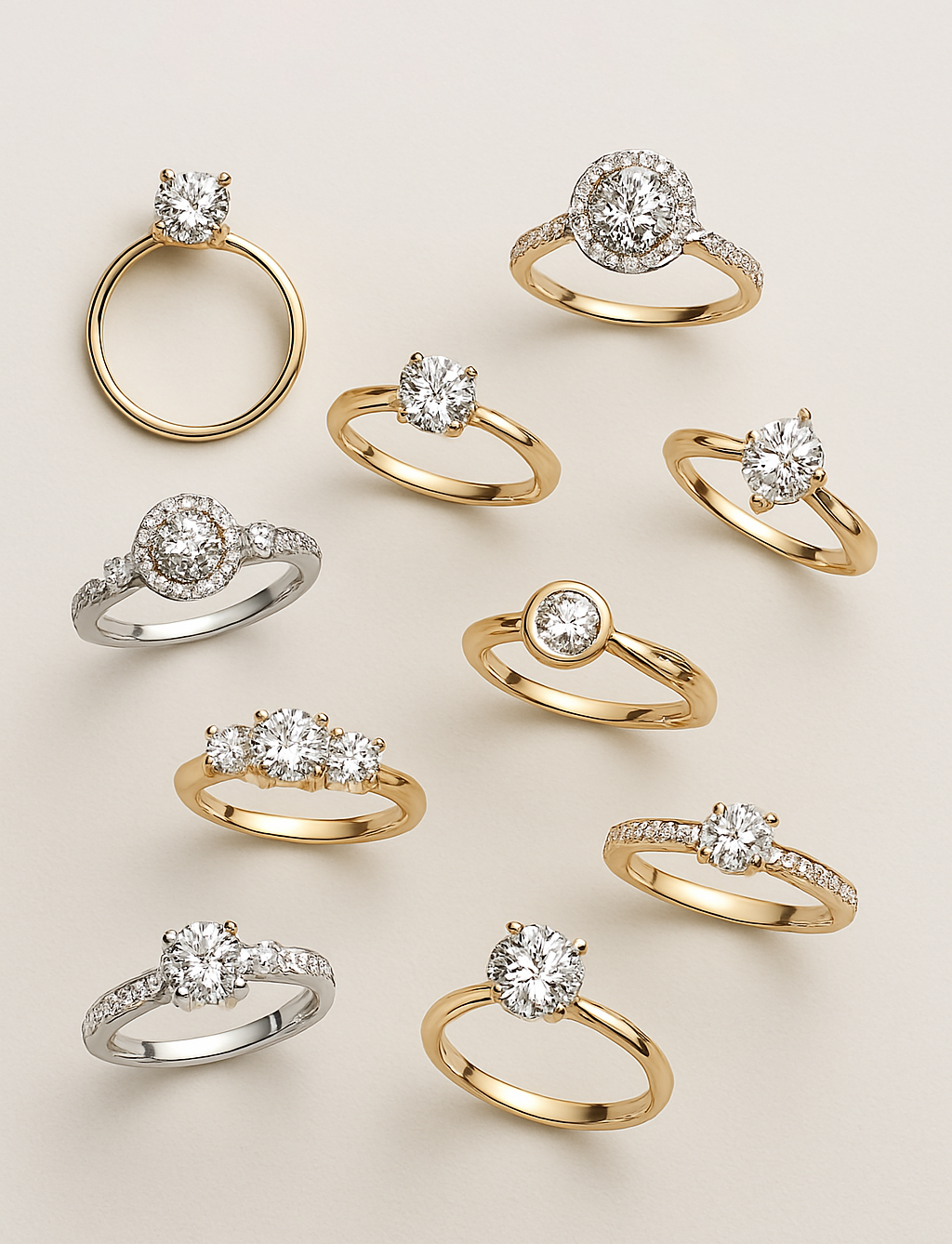
Understanding the different parts of a ring helps you make an informed choice and appreciate the craftsmanship behind each piece. Key components include:
Shoulders – The sides of the band leading up to the centre stone, often adorned with smaller diamonds.
By knowing these details, you can better understand what affects the ring’s look, durability, and comfort.
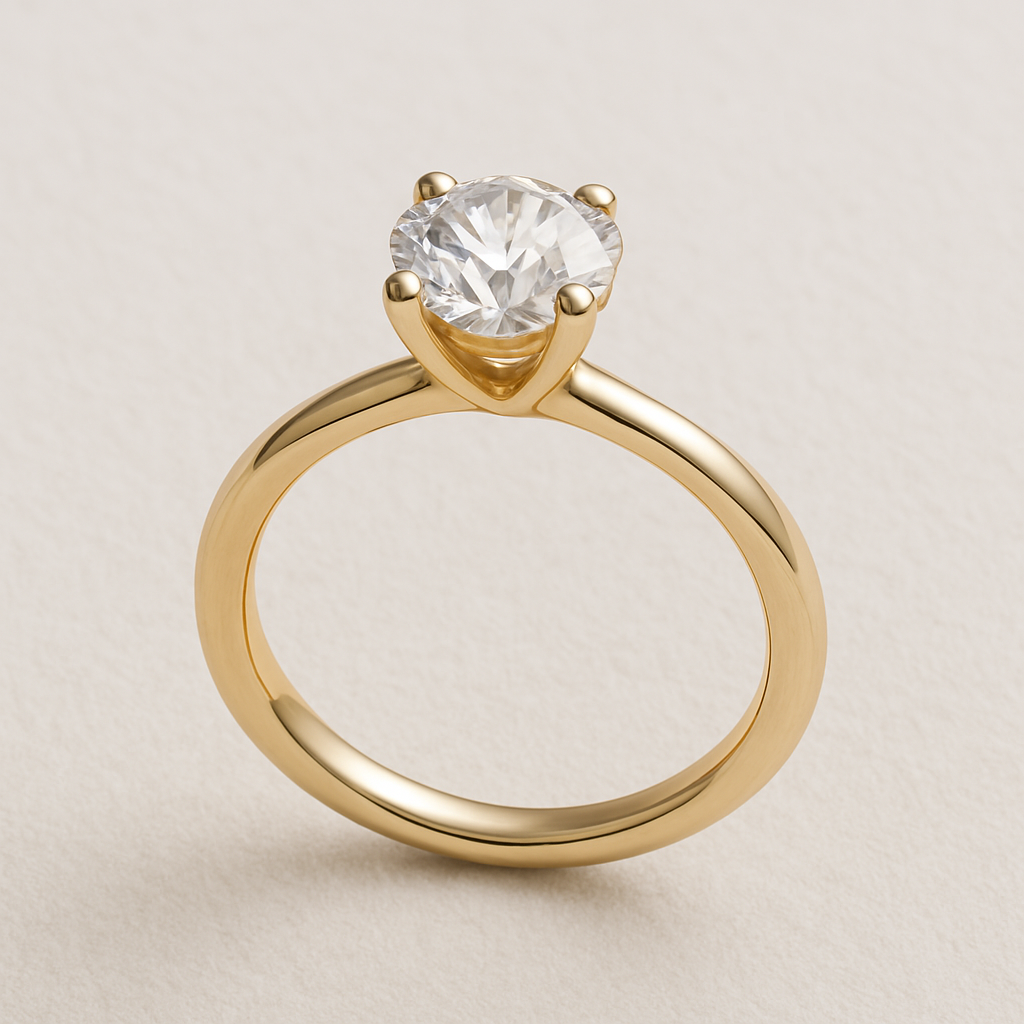
The solitaire engagement ring is perhaps the most iconic and enduring style, celebrated for its understated elegance and ability to showcase a single, brilliant diamond. The term solitaire refers to a single gemstone, unaccompanied by side stones or embellishments, allowing its beauty to take centre stage.
This design has been a favourite for centuries, symbolising pure, undivided love. Despite its minimalist nature, solitaire rings offer a wealth of design variations, from the setting style to the band shape. The diamond can be secured in a classic prong setting,elevated in a cathedral setting, or encased in a sleek bezel setting for a modern touch. The simplicity of the solitaire ring allows for customisation, making it an ideal choice for those who value both tradition and personal expression.
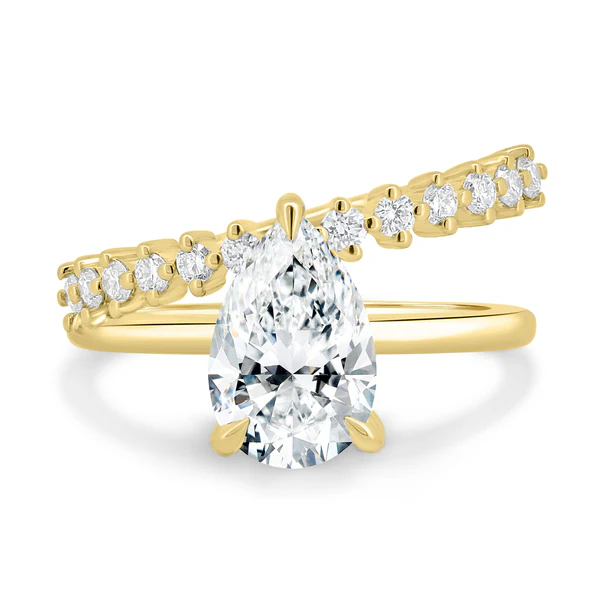
The halo engagement ring emerged in the Victorian era, where jewellery design was influenced by opulence and grandeur. This style features a central diamond surrounded by a circle of smaller diamonds, creating an effect that enhances size and brilliance. The additional stones reflect light back into the centre diamond, intensifying its sparkle and giving the illusion of a larger stone.
Halo settings have evolved over time, incorporating modern and vintage-inspired variations. Some feature double halos for even greater radiance, while others adopt hidden halos, where smaller diamonds are set beneath the centre stone, visible only from the side. This refined design detail adds depth and luxury without overwhelming the central gem. The halo ring is perfect for those who desire maximum sparkle and a striking presence, effortlessly blending classic glamour with contemporary elegance.
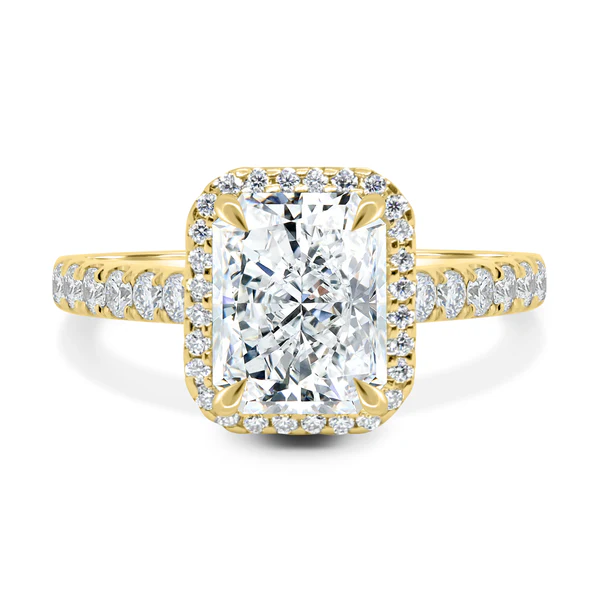
A hidden halo is a contemporary evolution of the traditional halo ring, offering an unexpected element of brilliance. Unlike a standard halo, where the smaller diamonds encircle the centre stone from a top-down view, a hidden halo is placed beneath the prongs of the setting, encircling the base of the diamond. This detail is only visible from the side, adding an extra layer of light reflection and intricacy.
This style is ideal for those who appreciate subtle luxury, as it enhances the centre stone’s brilliance while maintaining a clean, minimalist aesthetic. Many solitaire rings can be adapted to include a hidden halo, making it a versatile option for those seeking a refined yet radiant ring.
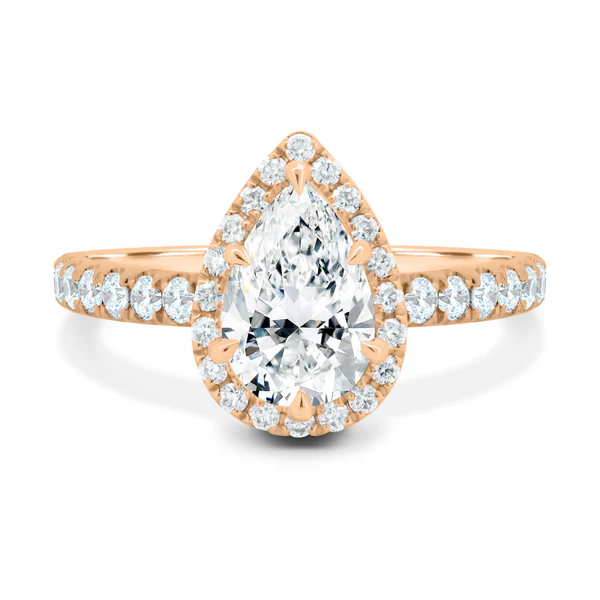
A diamond-set engagement ring introduces additional diamonds along the band, complementing the centre stone while elevating the overall brilliance of the ring. Unlike a halo setting, where smaller diamonds surround the centre stone, diamond-set bands feature accent stones along the shank, drawing attention to the ring’s structure and enhancing its elegance.
This style has been favoured for centuries, particularly in Edwardian and Art Deco jewellery, where intricate detailing and shimmering surfaces were highly sought after. The setting style of the accent diamonds plays a significant role in the ring’s final appearance—whether it’s the pavé setting, where tiny diamonds appear as though they are seamlessly “paved” into the band, or the channel setting, which offers a modern, streamlined look with stones nestled within a groove in the metal.
For those who love extra sparkle without overshadowing the centre stone, a diamond-set band is a beautiful way to introduce a touch of opulence and brilliance to an engagement ring.
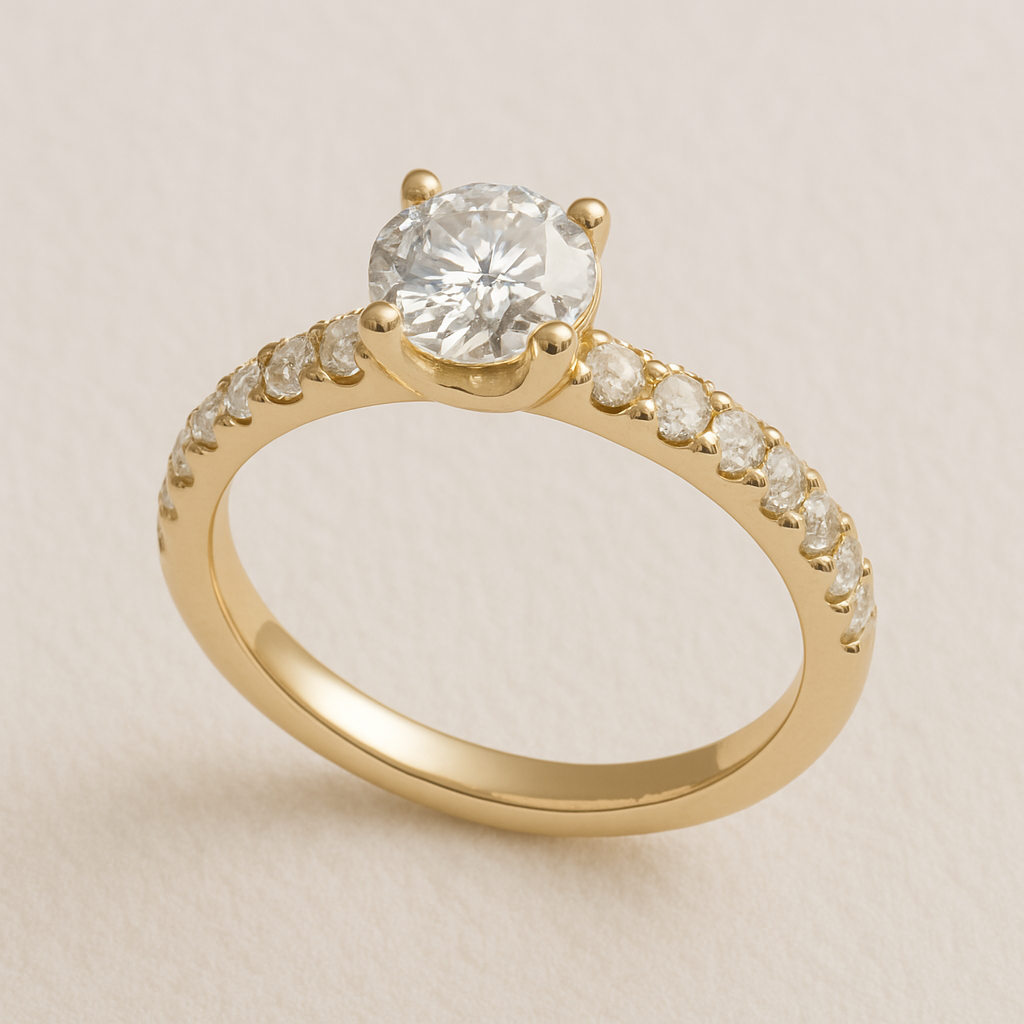
The prong setting is the most well-known and widely used method for securing a diamond in an engagement ring. This design features small metal claws (or prongs) that grip the diamond, lifting it above the band to allow maximum light entry. By exposing more of the stone’s surface, prong settings enhance brilliance, fire, and overall sparkle.
Prong settings can be tailored to different aesthetics—claw prongs add an elongated, elegant effect, while button prongs offer a more rounded, delicate look. The number of prongs also affects the ring’s style and security; a four-prong setting provides a minimalist, floating effect, whereas a six-prong setting offers added security while slightly altering the visual shape of the diamond.
This setting remains a timeless favourite, balancing structural integrity with dazzling light performance.

Inspired by the grandeur of cathedral architecture, this setting is defined by graceful arches that rise from the band to cradle the centre stone. By lifting the diamond, the cathedral setting creates height and prominence, allowing more light to pass through the diamond for enhanced brilliance.
This design has been cherished for centuries, particularly in traditional European engagement rings, where height and elegance were seen as markers of refined craftsmanship. While cathedral settings inherently feature a high-set diamond, they can be adjusted for varying degrees of prominence, offering both subtle and dramatic silhouettes.
From a side profile, the curved arches add an element of sophistication, making this a perfect choice for those who admire a graceful, architectural design.

A bezel setting is one of the oldest and most secure methods for setting a diamond, where a thin metal rim encircles the stone’s edges, holding it firmly in place. Unlike a prong setting, which leaves the sides of the diamond exposed, a bezel setting completely or partially surrounds the stone, offering maximum protection against knocks and daily wear.
Historically, bezel settings were popular in ancient jewellery, prized for their durability and seamless appearance. Today, they have been reimagined into sleek, modern designs, often paired with a wave shank or minimalist band.
A demi-bezel setting is a variation where the metal only partially encircles the stone, allowing more light entry while maintaining a high level of security. This setting is perfect for those who desire a contemporary, low-maintenance ring with a bold, architectural look.

The pavé setting derives its name from the French word for “paved”, as it features small diamonds set closely together, covering the band in a brilliant, shimmering surface. This technique, refined during the Art Deco period, creates a luxurious, diamond-encrusted look while allowing the metal to remain subtle and minimal.
Pavé-set bands are designed to complement the centre stone without overpowering it, making them an ideal choice for those who seek sophistication and brilliance in equal measure.

A channel setting secures diamonds within a metal groove along the band, creating a seamless row of stones with a sleek, structured appearance. Unlike pavé settings, which use tiny prongs to hold each stone, the channel setting sandwiches the diamonds between two solid metal edges, offering a flush, protected design.
This setting is a favourite for those who prefer clean lines and understated luxury, balancing brilliance with a contemporary aesthetic.

Every natural diamond we offer is GIA-certified — graded by the Gemological Institute of America, the world’s most respected authority in diamond assessment.
Your GIA certificate confirms:
At Finite Jewels, we believe your diamond should come with clarity, confidence, and certification — always.
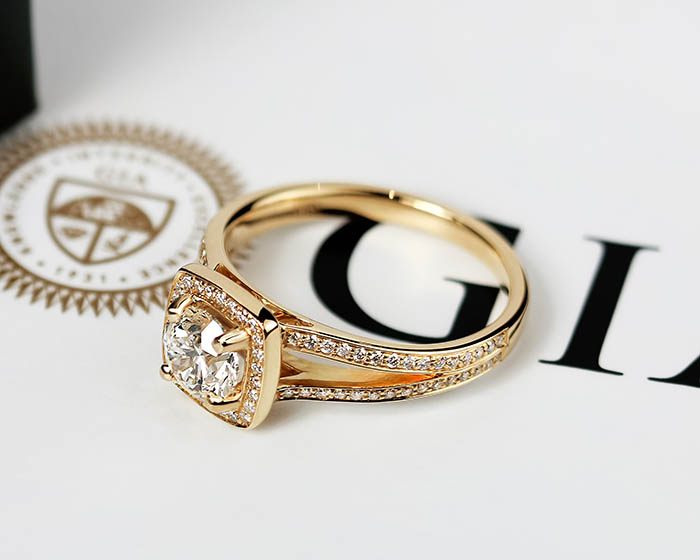
Mined diamonds are formed over billions of years deep within the Earth — each one a unique product of time, pressure, and nature. Their rarity and natural origin make them a timeless symbol of love, strength, and legacy.
Why choose mined diamonds?
